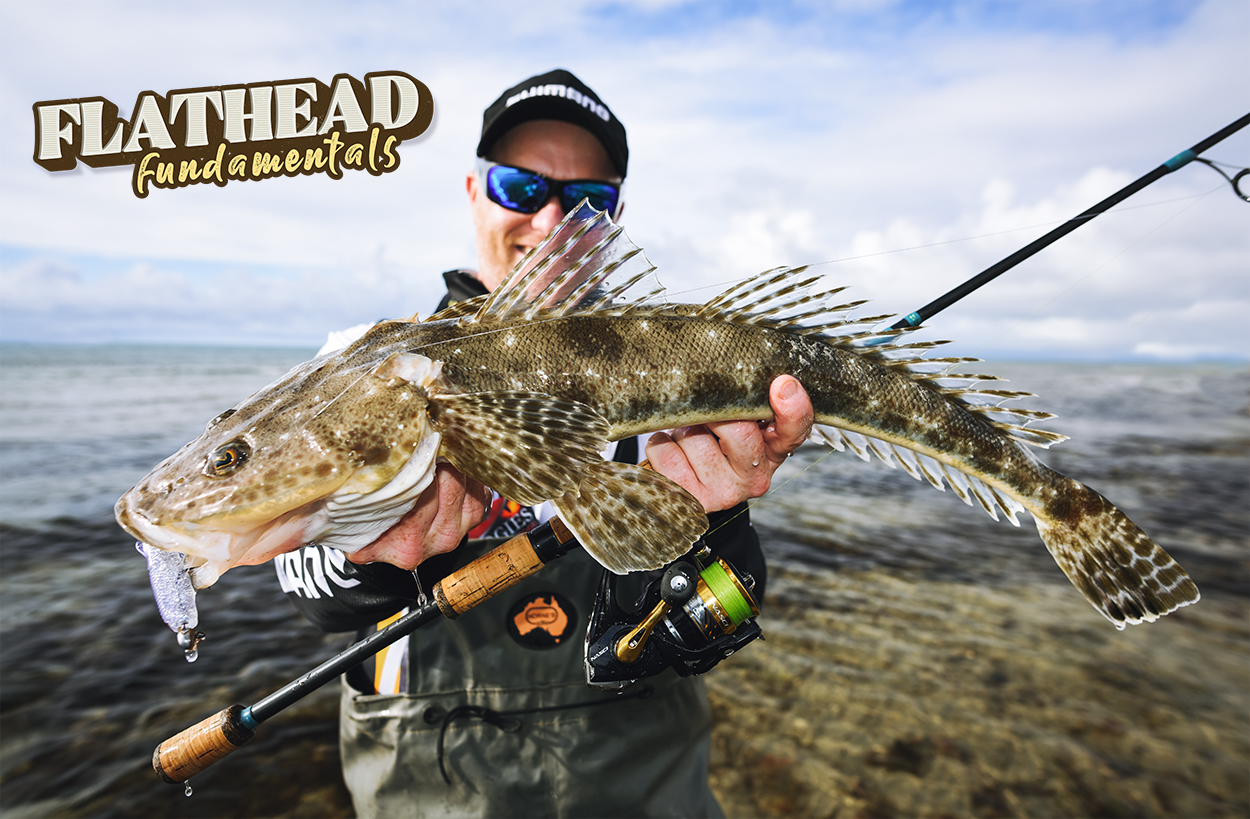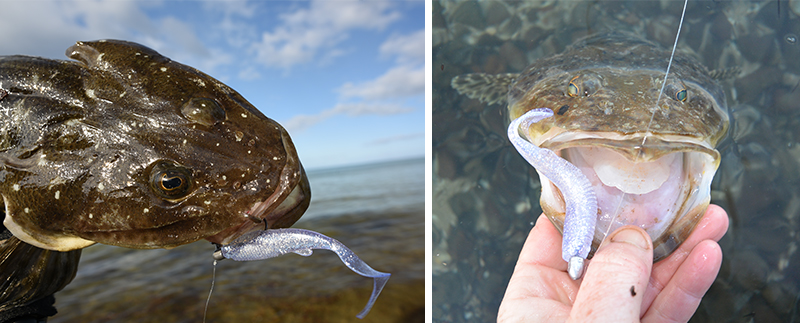
Flathead are serial offenders when it comes to eating soft plastics; they just can’t help themselves! Softies have become entrenched as a frontline selection for those after these flat-profiled, camo-skinned fish, and their regular results dictate they’re a must-bring option.
For those hooked on this addictive species/lure combination, the Shimano Squidgy Bio Tough range will only further fuel the fire, and it provides an exciting, all-new soft option that is already proving irresistible to these wide-mouthed predators. The Bio Tough series has built on the established success of the original Squidgies range, while providing anglers with a raft of fresh advantages, and the flathead have so responded in a big way right around the country.

There’s a spread of options in the Squidgy Bio Tough line-up that are absolute flathead candy. The common thought process with soft plastics for flathead is that a decent profile size is best for tempting the better fish, and for getting seen, with 75-120mm a safe size range to be fishing. 100mm and above is fairly standard when deliberately going after bigger lizards, which are more than capable of sucking down whole mullet, so this still only represents a halfway decent snack even for a medium sized flattie!
Specifically, the Bio Tough Fish in 100mm is a safe bet to be flicking around. Paddle or T-tails offer lifelike movement on the drop and are easy to fish, with the tail always working for you and requiring minimal effort. Similarly the Bio Tough Wriggler in 100-120mm has a crazy amount of inbuilt tail action, which is well documented in the smaller sizes for bream and the like, but is equally at home tempting flatties in the larger profiles. Finally the Bio Tough Flick Bait in 75-100mm is more than a fair baitfish representation, perfect when you’re after a ridged profile to emulate mullet and other likely food sources that will randomly flick and flitter around. The smaller creature baits in the range will also account for flathead, and again replicate known food sources of these fish.

There’s always a lot of speculation and discussion when it comes to lure colour. For flathead it’s best not to overthink things, with the following basic principles fine to guide your efforts to start with. The Bio Tough options mentioned have both more natural patterns and brighter colours. Flathead are highly visual feeders and if fishing discoloured water or in gloomy conditions then often a brighter pattern like Pink Glitz could be worth turning to, or a high contrast darker colour like Pumpkin Seed. For gin-clear water on the coastal flats for example you may want to closely replicate the baitfish in the area, so a Natural Bait pattern could be a good option to turn to, while also keeping in mind a bright or contrasting lure will be easily spotted by these fish and is always deserving of a run.
A real positive of the Bio Tough range is that they’re constructed of Dura Stretch material, making them extremely robust for the continuous casting and multiple fish likely during a flathead session. When it all boils down this means more bang for your buck, and less re-rigging!

Selecting a suitable jighead to rig your ‘Bio’ on is the next step. 1/8 and 1/6 weight heads are typical for casting over flats waters for these fish, while you’ll want to step it up for deeper more high flow areas. A hook size of 1/0 to 3/0 is recommended, with good hook exposure vital to a solid hook-set. Squidgy Weapon jigheads have you well covered in this area. Weedless rigging is also commonly used in rockier terrain to limit snags.
A healthy rod length of 8-10kg Ocea Fluorocarbon tied to your favourite Shimano 2-4kg flick-stick outfit will have you locked and loaded for battle with these head-shaking wild things!

Flathead may be noted for their insatiable appetites, mega mouths and reckless feeding ways, but you still want to put some thought into how you fish your Bio Tough plastics.
Retrieve wise it’s important to keep in touch with the bottom for flathead, and letting you lure sink to the seafloor before giving it an enticing flick or two off the bottom seems reliable. Keep retrieve speeds constant without being too quick, maximising the time spent in the likely areas you’re casting over. Flathead like a chase and if they want your plastic they’ll rush up on it and inhale it, even right at your feet, so it’s hard to go wrong in this department.
Methodical casting over of the hot spots you’ve identified will soon provide you with chances all going well. After that first ‘clunk’ travels up your braid and you’re getting peeled by a solid Bio munching flathead, we’re sure the love affair with these deadly lures and Aussie favourite fish will only intensify!